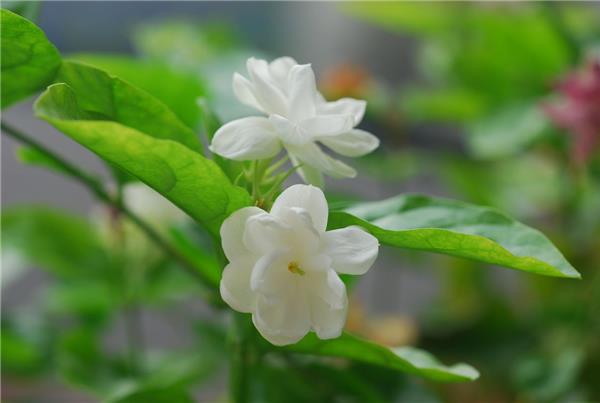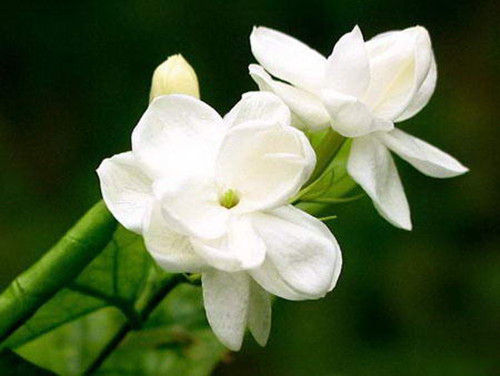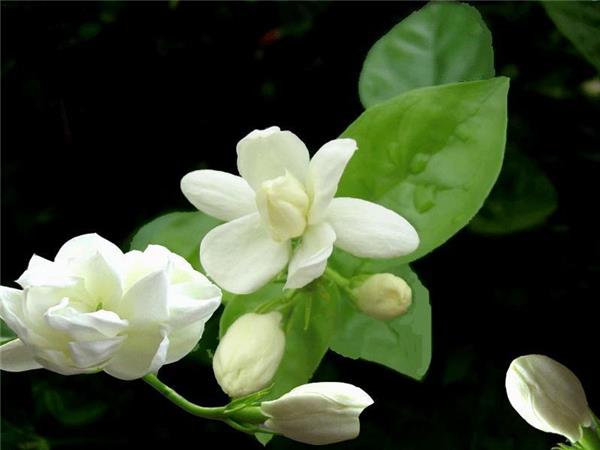[African jasmine does not blossom] what if African jasmine does not bloom?
What if African jasmine doesn't blossom? When it comes to the flowering of African jasmine, it is estimated that many flower friends have African jasmine blooming? Such questions as when African jasmine will bloom, and it is also defined as foliage plants in the encyclopedia, the fragrant African jasmine is even more out of reach.

It is not that African jasmine cannot blossom, but according to the investigation of many flower friends, it is not easy for African jasmine to blossom, whether in the north or in the south, and the flowering African jasmine has a common characteristic, that is, the bell of African jasmine is long enough, as little as five years, or even more than ten years. So it is not easy for many flower friends to blossom African jasmine.
The reason why African jasmine does not bloom
African jasmine leaves grow luxuriantly but do not blossom, which is usually related to improper conservation. The main reasons are:
1. Lack of phosphorus and potassium fertilizer: African jasmine buds need sufficient phosphorus and potassium fertilizer, and people usually prefer to apply nitrogen fertilizer. For this reason, in the growing season of jasmine, especially in the bud period, it is necessary to apply less nitrogen fertilizer and more phosphorus and potassium fertilizer. In addition to using rotten bone powder and poultry manure as base fertilizer, bone and poultry manure rotting leachate or available phosphorus and potassium fertilizer can also be used as topdressing.

2, lack of light: African jasmine likes strong light, because some family balconies can not shine in the sun all day, so it is often shaded for a long time, resulting in large and sparse leaves, few flowers or even no flowering. To this end, the flowerpot should be moved to a sunny place for maintenance.
As long as African jasmine is given enough base fertilizer to make the flowers at the top of their fertility, they will blossom in May, and 0.1% potassium dihydrogen phosphate will be sprayed to the leaves every two weeks since March to stimulate buds, exposure to sunlight and enough water, and they will blossom.

How to prune African jasmine
African jasmine is usually treated with heart-picking during the growing period, so that it does not affect viewing. If the lower leaves fall off seriously, re-cutting must be carried out. The specific method is to put the plant under suitable environmental conditions about half a month in advance (such as sufficient sunlight in spring or scattered light in summer), and appropriate amount of fertilizer to promote growth. When the growth is normal after half a month, each branch should be cut short, and the position of the cut should be determined according to the size of the plant. The general interception length is about 15 meters, or it can be retained to 30 meters.

The watering times can be controlled after pruning. Due to the reduction or disappearance of leaves, the transpiration is very low and the water demand is not large. But after each watering, it is best to choose fertilizer and water irrigation, with the growth of new branches and leaves, fertilizer and water management can be increased.
Potted African jasmine flowers should generally be changed once a year. When changing the basin, part of the old soil and residual roots around the jasmine root system were removed and replaced with a new culture soil to improve the soil aggregate structure and nutrients, which was beneficial to the growth of Riley. When you change the basin, water it thoroughly as if it were on the basin, so that the root soil can be connected closely and the growth can be restored. Riley should be pruned before changing the basin, leaving only about 10 centimeters for the branches born last year, and cut off the diseased and withered branches and the over-dense and thin branches. During the growing period, the old leaves that are too dense are often removed, which can promote the germination of axillary buds and the emergence of new branches and long buds.
Related
- Wuhan Hospital Iron Tree Blooming Result Was Instantly Frightened by the Gardener Master
- Which variety of camellia is the most fragrant and best? Which one do you like best?
- What is the small blue coat, the breeding methods and matters needing attention of the succulent plant
- Dormancy time and maintenance management of succulent plants during dormancy
- Minas succulent how to raise, Minas succulent plant pictures
- What are the varieties of winter succulent plants
- How to raise succulent plants in twelve rolls? let's take a look at some experience of breeding twelve rolls.
- Attention should be paid to water control for succulent plants during dormant period (winter and summer)
- Watering experience of twelve rolls of succulent plants
- Techniques for fertilizing succulent plants. An article will let you know how to fertilize succulent plants.



